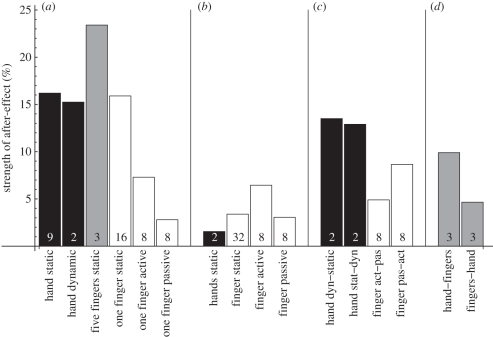Figure 4.
Strength of the after-effect is defined as follows: 100 % × (PSE after adaptation to a convex stimulus minus PSE after adaptation to a concave stimulus)/(convex minus concave adaptation curvature). Data from various studies combined and reanalysed: (a) Same hand or finger conditions: hand static [9,12], hand dynamic [12], five fingers static [12], one finger static [18], one finger active [16]; (b) Transfer to other hand or finger: hand static [12], finger static [18], finger active [16], finger passive [16]; (c) Different conditions with the same hand or finger: hand dynamic-static and hand static-dynamic [12], finger active-passive and finger passive-dynamic [16]; (d) From hand to fingers and vice versa [12]. The numbers in the bars indicate the number of subjects that participated in an experiment. Black is hand condition, grey is five fingers condition and white is finger condition.

